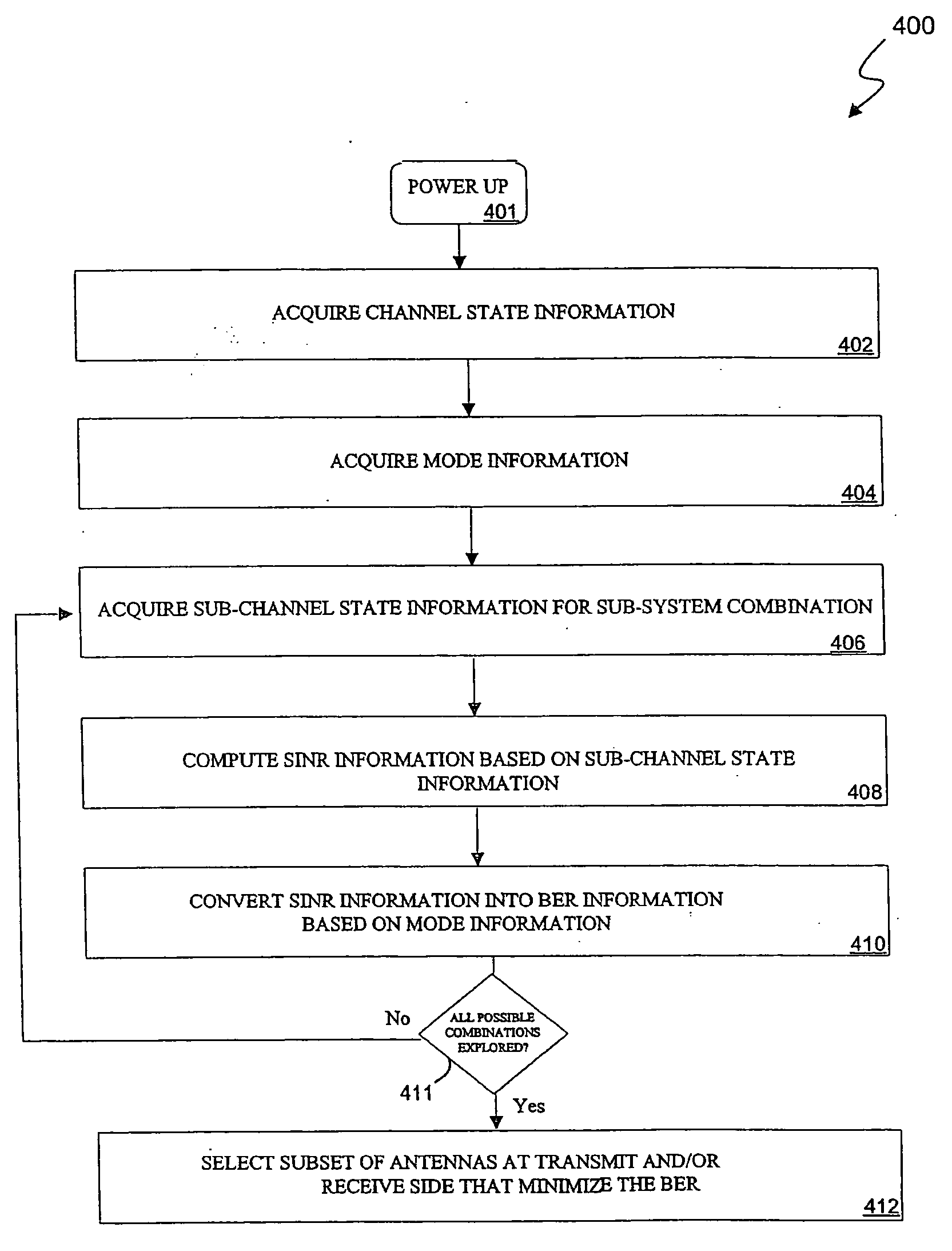System and method for channel-adaptive antenna selection
- Summary
- Abstract
- Description
- Claims
- Application Information
AI Technical Summary
Benefits of technology
Problems solved by technology
Method used
Image
Examples
Embodiment Construction
I. Overview of Some Aspects of the Present Invention
[0027] Some embodiments according to some aspects of the present invention may relate to communication systems that use a transmitter and / or a receiver that have multiple antenna elements.
[0028] Some embodiments according to some aspects of the present invention may relate to systems and methods that provide channel-adaptive antenna selection in multi-antenna-element communication systems.
[0029] Some embodiments according to some aspects of the present invention may be implemented to facilitate a selection of a subset of antenna elements in one or more multi-antenna wireless communication devices based on a criterion predicated, at least in part, on computed output bit error rates.
[0030] Some embodiments according to some aspects of the present invention may be implemented to facilitate the selection of a subset of antenna elements in one or more multi-antenna wireless communication devices so as to minimize or to optimize, for ...
PUM
 Login to View More
Login to View More Abstract
Description
Claims
Application Information
 Login to View More
Login to View More - R&D
- Intellectual Property
- Life Sciences
- Materials
- Tech Scout
- Unparalleled Data Quality
- Higher Quality Content
- 60% Fewer Hallucinations
Browse by: Latest US Patents, China's latest patents, Technical Efficacy Thesaurus, Application Domain, Technology Topic, Popular Technical Reports.
© 2025 PatSnap. All rights reserved.Legal|Privacy policy|Modern Slavery Act Transparency Statement|Sitemap|About US| Contact US: help@patsnap.com



